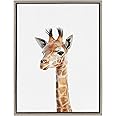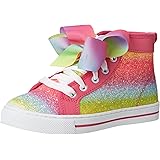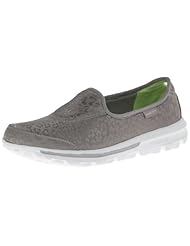In the world of fashion, trends come and go, but some styles have an uncanny ability to make a comeback. One such trend that has taken the sneaker market by storm is animal print. From leopard spots to zebra stripes, animal prints have transcended their traditional applications in clothing and accessories, finding a prominent place in the realm of footwear. This article delves into the rise of animal prints in sneaker fashion, exploring its historical context, cultural significance, and the brands that have embraced this bold trend.
The Historical Context of Animal Print in Fashion

Animal prints have been a part of human fashion for centuries, often symbolizing power, status, and wildness. Historically, they have been used in various cultures as a means of showcasing wealth and social standing.
- Ancient Civilizations: In Ancient Egypt, animal skins were worn as symbols of status and strength. Similarly, in many Indigenous cultures, animal prints were used in traditional attire.
- 20th Century: The turn of the century saw the rise of animal prints in Western fashion, particularly during the 1960s and 70s, when bold prints became synonymous with the counterculture movements.
With the evolution of fashion sensibilities, animal prints have gradually transitioned from high fashion runways to everyday wear, marking their resurgence in the sneaker market.
The Resurgence of Animal Prints in Footwear

The past decade has witnessed a significant resurgence of animal prints in footwear, particularly in sneakers. This trend can be attributed to a combination of factors:
- Influence of Streetwear: The rise of streetwear culture has popularized bold and expressive designs, making animal prints a staple in casual footwear.
- Celebrity Endorsements: Influential figures like Rihanna and Kanye West have embraced animal prints in their footwear lines, driving consumer interest.
- Social Media: Platforms like Instagram allow brands to showcase their products in innovative ways, further propelling the popularity of animal prints.
Brands Leading the Charge

Several footwear brands have successfully integrated animal prints into their sneaker collections, appealing to diverse audiences. Below are some notable examples:
- Nike: Nike has released various models featuring animal prints, with the Air Max and Air Force 1 lines showcasing leopard and python patterns that have become instant hits.
- Adidas: The Adidas Animal Pack, which features a collection of sneakers with animal-inspired designs, highlights the brand’s commitment to this trend.
- Puma: Puma has embraced animal prints in collaborations with celebrities like Selena Gomez and Rihanna, bringing these bold designs to mainstream consumers.
These brands not only showcase animal prints on their sneakers but also integrate them into special collaborations, making them highly sought-after items in the sneaker community.
Cultural Significance of Animal Print Sneakers

Animal prints in sneakers are not just about aesthetics; they carry cultural significance that resonates with consumers. The prints often symbolize a connection to nature, individuality, and rebellion against conventional fashion norms.
- Connection to Nature: Animal prints evoke a sense of the wild and untamed, appealing to consumers’ desires for authenticity and connection to the natural world.
- Individuality: Wearing animal prints allows individuals to express their personality and stand out in a crowd, aligning with the growing trend of self-expression in fashion.
- Rebellion: Animal prints challenge traditional notions of style, often associated with boldness and a willingness to break fashion rules.
Statistics and Market Trends
The rise of animal print sneakers can also be backed by various market statistics. According to a report by Statista, the global athletic footwear market is projected to reach approximately $100 billion by 2025, with animal print sneakers becoming a significant segment of this growth.
Furthermore, a survey conducted by The NPD Group revealed that:
- Over 30% of sneaker buyers cited animal prints as a preferred design choice.
- Brands that introduced animal prints saw a 15% increase in sales compared to previous seasons.
These statistics underscore the growing demand for unique, attention-grabbing designs in the footwear market.
Consumer Preferences and Demographics

The appeal of animal print sneakers spans various demographics, though certain trends have emerged regarding consumer preferences:
- Millennials and Gen Z: Younger generations are particularly drawn to bold, expressive styles, making animal prints a popular choice for this demographic.
- Gender-Neutral Appeal: Many sneaker brands have embraced unisex designs, allowing animal prints to cater to a broader audience regardless of gender.
As sustainability becomes a more significant concern among consumers, brands that incorporate eco-friendly materials in their animal print designs are likely to gain a competitive edge.
Challenges and Criticisms
Despite the popularity of animal prints in sneakers, the trend is not without its challenges and criticisms:
- Over-Saturation: With many brands jumping on the animal print bandwagon, there is a risk of market saturation, potentially leading to diminished consumer interest.
- Cultural Appropriation: Some critics argue that the use of animal prints can verge on cultural appropriation, especially when designs are derived from Indigenous cultures without proper acknowledgment.
Brands must navigate these challenges responsibly, ensuring that their designs are thoughtful and culturally sensitive.
The Future of Animal Print in Footwear Fashion

Looking ahead, the future of animal print sneakers appears promising. As consumers continue to seek individuality and expressiveness in their fashion choices, animal prints will likely evolve and adapt to new trends.
- Innovation in Design: Expect to see new interpretations of animal prints, including abstract designs and mixed patterns that push the boundaries of traditional aesthetics.
- Sustainability: Brands that prioritize eco-friendly materials and ethical production practices will resonate with consumers who are increasingly mindful of their purchasing decisions.
The rise of animal print in sneaker fashion reflects a broader cultural movement towards bold self-expression and individuality. As brands like Nike, Adidas, and Puma lead the charge, consumers are embracing these eye-catching designs as not just a fashion statement but also a means of connecting with their identity and the natural world. While challenges such as market saturation and cultural sensitivity remain, the future of animal print sneakers looks bright, promising innovative designs that will continue to captivate audiences. As we step into the next chapter of sneaker fashion, it’s clear that the sneaker safari is just beginning—one print at a time.